When it is up to the power, we first need to know that the card with the factory settings at 300 watts has been set with an already quite high Power Target limit. This Power Target is of course fully exploited in gaming and stress testing. The increase in the afterburner to the real achievable maximum of approx. 330 watts is enough, as long as you haven't completely missed the GPU lottery. Significantly higher settings or even a shunt mod would hardly make a difference with the current firmware design except then more noise and a lot of hot air.
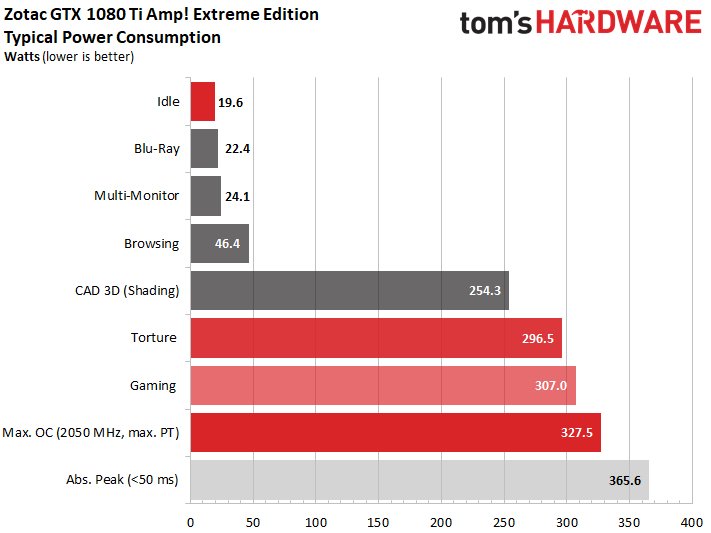
The chip on the test pattern is not a top class, but good enough to reach just under two GHz at 1,062 V – provided the card stays well below 50°C. Below 65°C one still manages 1987 MHz with 1.05 V, while the voltage then levels later at 1,043 V. This small reserve allows us a certain overclocking later, if we force the fan control to 64°C. The voltages in the stress test are, of course, significantly lower.
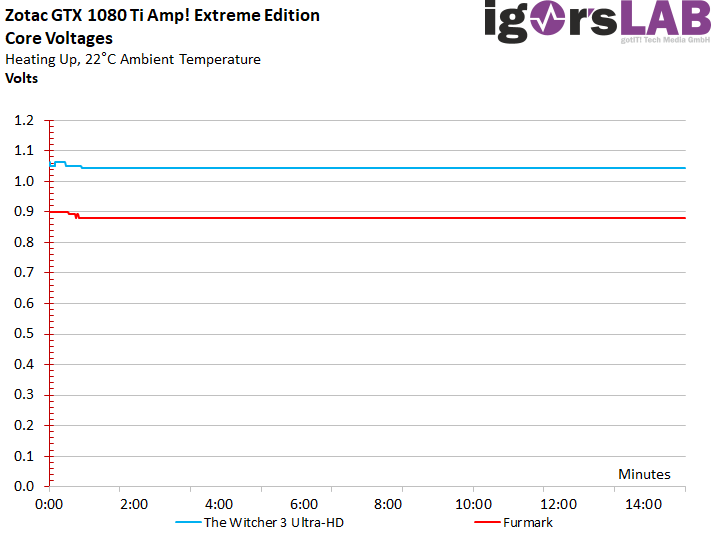
More about the gaming loop
Now let's look at the curve for the power consumption separately according to the individual supply rails (rails) in a higher resolution over the period of two minutes. Despite our intelligent low-pass filter, some spikes remain visible, which can then be used up to approx. 343 watts. On average, however, the map is pretty much at the level of the set power target of 300 watts.
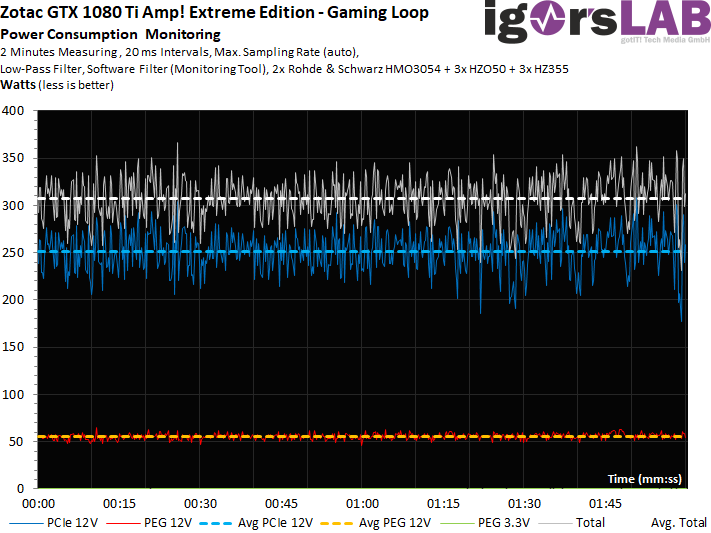
For this purpose, the curves of the currents look identically hectic:
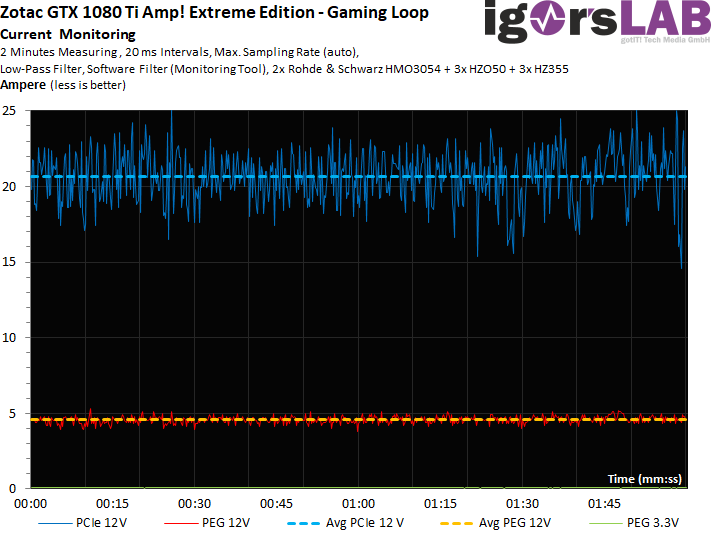
Torture test in detail
Since the load is more constant, the power consumption increases again somewhat as an average value, but the peaks are almost completely eliminated. We see very nicely where Boost is already starting to brutally throttle the power consumption and the card stays just below the power target at the average.
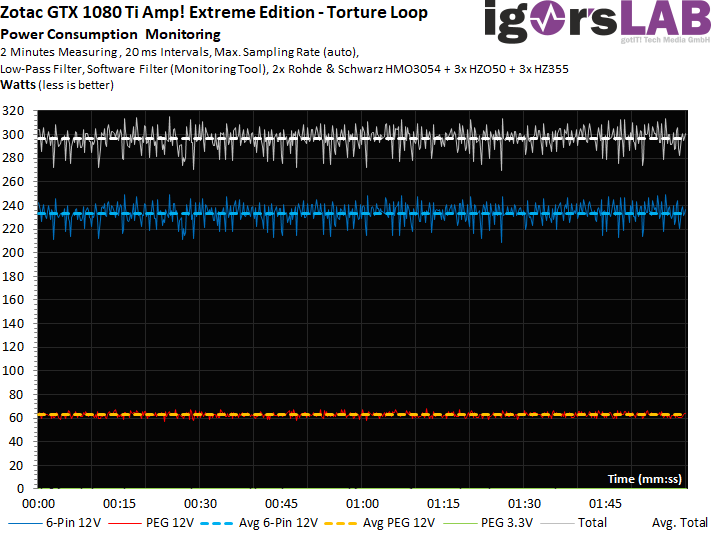
Again, analogously, only the view of the flowing currents:
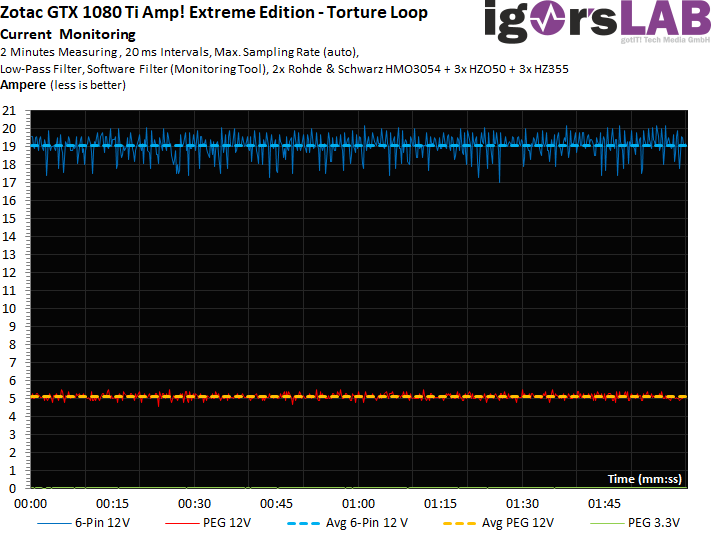
Maximum OC in detail
We do not achieve more than 330 watts in power consumption measurement, even by further overclocking and releasing the maximum control margin for the Power Target. At the top, however, we already reach values beyond the 360 watts, after all.
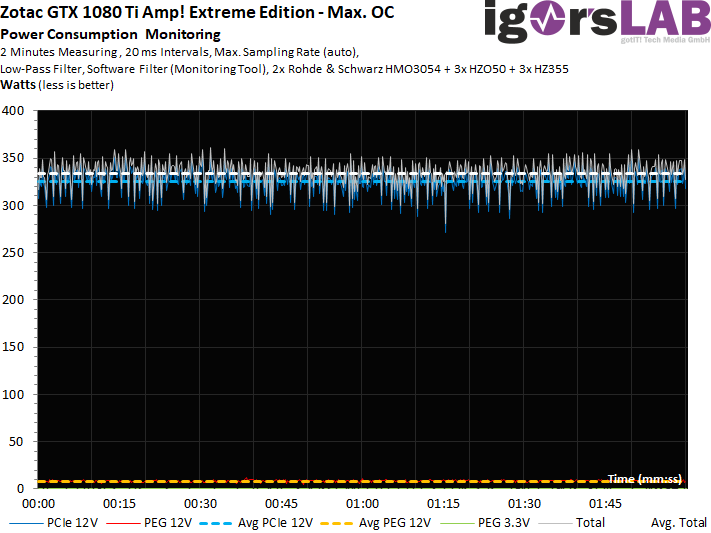
Again, analogously, only the view of the flowing currents:
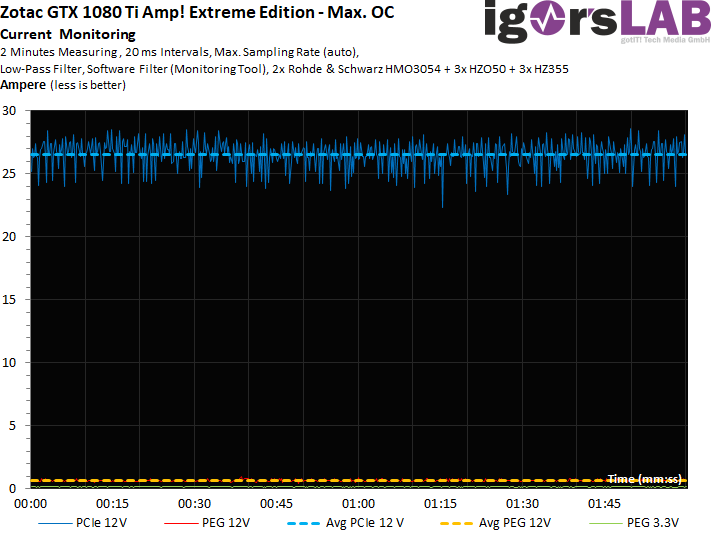
Utilization of the motherboard slot
This point has been repeatedly demanded by readers since the launch of the Radeon RX 480 (also for Nvidia cards), so we will now include this point in every test. With the card tested today, however, the concern is unfounded, because the slot is used rather moderately with just under 5 amps.
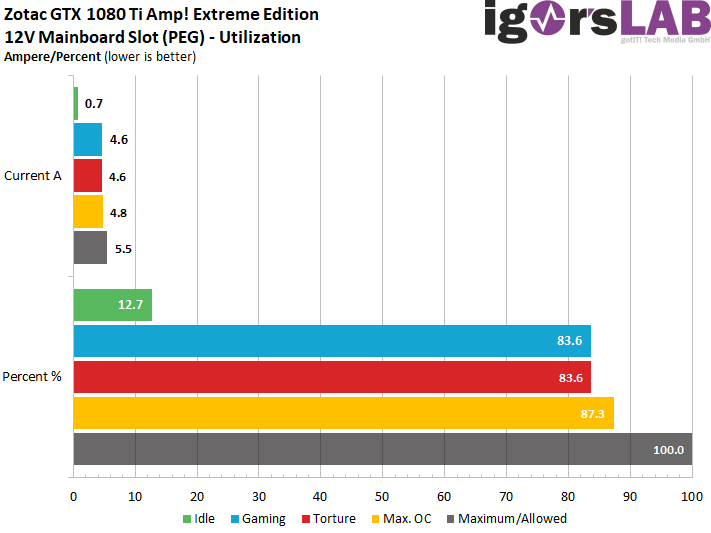






























Kommentieren